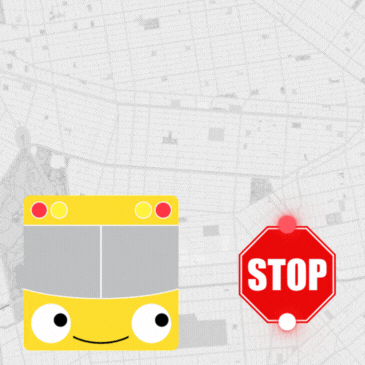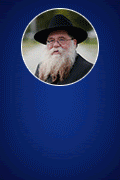at the first local lighting.
“Jews are thrilled to see a menorah. It brings them Jewish pride,” assured Rabbi Moishe Traxler, director of outreach at Chabad of Houston, who co-designed the $1,000, 4-foot, metallic-painted menorahs atop the cars based on a 12th-century design by the Rambam. He also oversees the lighting of the ice menorah's oversize candles.
It’s Not the Holiday Without the 9-Footer!
at the first local lighting.
Encino, Calif. — On the third night of Chanukah, at 6 p.m., a parade of 40 cars topped with electric menorahs will wend its way about six miles under police escort from southwest Houston to the Galleria, where several thousand people will gather for the lighting of a giant, 7-foot menorah carved out of ice.
“Jews are thrilled to see a menorah. It brings them Jewish pride,” assured Rabbi Moishe Traxler, director of outreach at Chabad of Houston, who co-designed the $1,000, 4-foot, metallic-painted menorahs atop the cars based on a 12th-century design by the Rambam. He also oversees the lighting of the ice menorah’s oversize candles.
Public lightings of Chanukah menorahs in the United States have grown exponentially since 1974, when Rabbi Abraham Shemtov of Philadelphia’s Chabad Lubavitch Center kindled a small menorah at the foot of the Liberty Bell at Independence Hall. (This year’s event takes place on Dec. 16 with a “March of Lights.”)
The following December, a 22-foot-high mahogany menorah was lit in San Francisco’s Union Square — its idea conceived by the Northern California Chabad founder Rabbi Chaim Drizin, among others, and its design and construction funded by rock-music promoter Bill Graham.
To many Jews, these public celebrations — with oversized and unconventional menorahs carved of ice or built of Legos — create a sense of Jewish pride.
And given that Chanukah is an anti-assimilationist holiday, many believe the exhibits establish the menorah as a universal symbol of religious freedom.
To others, however, the public menorah displays raise controversial legal issues regarding separation of church and state, as well as issues regarding the religious significance of the menorah and the true interpretation of the talmudic commandment to publicize the holiday miracle.
Chabad now sponsors thousands of public menorah-lightings around the world, according to Rabbi Zalman Shmotkin in New York, but not all lightings fall under their auspices.
At the Promenade in Westlake Village, Calif., on the fourth night of Chanukah, two-dozen third-graders from the Conservative synagogue Temple Beth Haverim in nearby Agoura Hills — dressed as latkes, candles and cruses of oil — will sing “I Am a Latke” and other Chanukah songs preceding the lighting of a 9-foot menorah.
Since the mall opened a decade ago, Beth Haverim has sponsored this “Chanukah pageant,” which, according to Rabbi Gershon Weissman, carries out the commandment to publicize the miracle and makes the Jewish community feel supported.
“People come up to me afterward and say, ‘Thank you, rabbi, thank you for putting this up in the mall,’ ” said Weissman.
That was exactly the purpose in the 1980s, when the Lubavitcher Rebbe — the late Rabbi Menachem Mendel Schneerson — began campaigning for his Chabad emissaries stationed worldwide to sponsor menorah-lightings.
As Schneerson wrote in 1982, the public display “has been an inspiration to many, many Jews and evoked in them a spirit of identity with their Jewish people. … To many others, it has brought a sense of pride in their Yiddishkeit.”
However, controversy — and multiple lawsuits — erupted, most initiated by the Jewish community itself. They believed that public displays violated the Establishment Clause of the First Amendment, which separates the institutions of church and state.
But in 1989, a Supreme Court ruling on an 18-foot menorah Chabad Lubavitch had erected in a government building in Pittsburgh — Allegheny County v. Greater Pittsburgh ACLU — decided that the menorah did not endorse a particular religion. Placed next to a Christmas tree, it was a secular symbol that was “part of the same winter-holiday season.”
Yet the Union for Reform Judaism continues to maintain the separation of church and state, opposing all government-sponsored, government-funded religious displays on public property, according to rabbi and attorney Marla Feldman, director of the Commission on Social Action of Reform Judaism.
“The Talmud says, ‘Put the chanukiah in your own window.’ It doesn’t say to put it in someone else’s window.” Additionally, she noted, placing a menorah next to a Christmas tree gives the erroneous message that the two are somehow related.
The United Synagogue of Conservative Judaism, in a resolution on separation of church and state in the United States passed in 1997 and still in effect, maintains the same policy, according to Richard Lederman, the group’s director of social action and public policy.
Over time, however, many non-Orthodox clergy have tempered their positions.
Years ago, Rabbi Mark Diamond, executive vice president of the Board of Rabbis of Southern California, said that he would have given “an absolute and definitive ‘no’ ” to the concept of public menorah displays. Since then — though he remains offended by calling the menorah a secular symbol — he has witnessed how beautiful many of these ceremonies can be.
Diamond said that the lightings help remind all of us that Chanukah “is a religious holiday, and is not about shopping.”
For the past 40 years, Reform synagogue Temple Emanu-El in Tucson, Ariz., has kindled a 12-foot oil menorah that sits permanently on the front lawn facing a main thoroughfare.
“The basic mitzvah of the holiday is publicizing the miracle,” said Rabbi Samuel Cohon.
He believes the public display has had a positive effect on the community, even “rekindling the Jewish spark” in a few people who’ve later become members.
And for many rabbis, that’s precisely the point.













